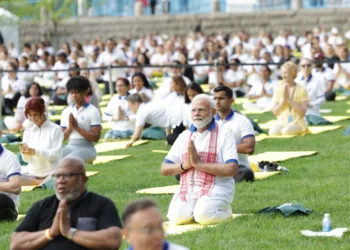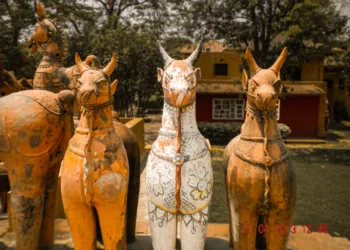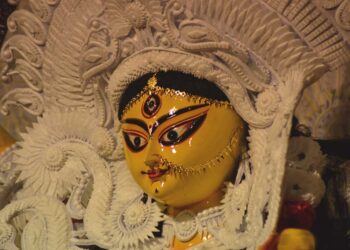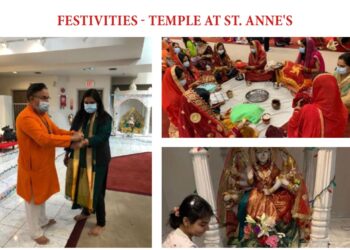Kasauli is a sleepy little stop on the way to Shimla that finds its place in the sun because of the Khushwant Singh Lit Fest that had enthusiasts thronging to it for both literary pursuits and some mountain fun
BYLINE VIJAYA PUSHKARNA
(PHOTOS PRAMOD PUSHKARNA)
There are litfests and there are litfests, but just one named after a person and that too in his home ‘town’, if it can be called that. And the pull of the person and the place together of course ensure an enviable panel of speakers, but equally this litfest has people jostling to be there, to hear them, and see the place. The 11th edition of the Khushwant Singh Literary Festival at Kasauli (October 14-16, 2022) showed that the renowned sardarji inside his incandescent bulb lives on in the hearts of his countless followers long after he is no longer alive to write for them his take on ‘this above all’ and his views with malice towards one and all. The author of scores of books, including two volumes of Sikh history and Train to Pakistan, would receive visitors by appointment at his Sujan Singh Park home in New Delhi, but even his summer abode, his home in Kasauli, had people coming by the droves. And the best part—Khushwant Singh remembered the name of every postman who brought him his snail mail, every technician who attended to his BSNL phone, and they all have stories about Kasauli’s most popular resident. The ‘Raj Villa’, gifted to his wife by her father, Teja Singh Malik, is where he would sit by the fireplace on a cold evening or outdoors, taking in the sunshine during the balmy days.
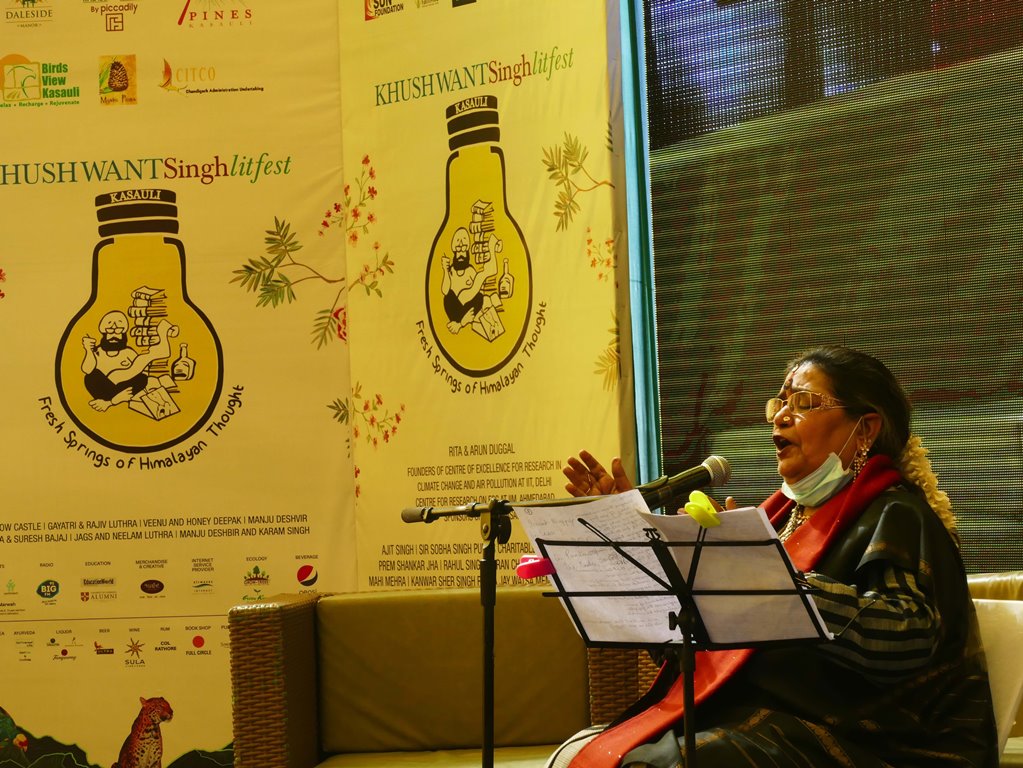
And so, come October, Kasauli becomes a holiday destination as well as pilgrimage, this for those in love with the letters. This year’s KSLF was, as always, dedicated to subjects Khushwant was passionate about—ecology and the environment, and the empowerment of the girl child; but with a twist. Themed The Climate of Change: Still Sprightly @ 75? If Amitav Ghose set the ball rolling on day one, Booker prize winner Geetanjali Shree wrapped up the threeday event, where Rajmohan Gandhi’s reflections and recollection of India after 1947 possibly drew the maximum applause as he answered parliamentarian Mahua Moitra’s very pertinent questions of India now; this even saw an emotional Gandhi unabashedly shedding tears as he came down heavily on the way Nehru and his legacy were being rubbished. Mallika Sarabhai’s narration of her free fall and her experiments with life had everyone spellbound, as she bared all, putting a woman’s perspective in the spotlight. Muzaffar Ali’s light and shade of his time from childhood to now evoked nostalgia. The list of speakers was long, but the common denominator was the celebration of Khushwant Singh and Kasauli, with people making it to the tiny cantonment 6,051 feet above MSL, with hardly enough accommodation within the hill station and roads that could have done with thorough relaying if not a quick patchwork, for love of the 2 Ks.

Kasauli is, as author Bikram Grewal puts it, “a hop, skip and jump” from Chandigarh, Punjab and Delhi. That it has always been in terms of distance, yet the tourist attraction was always Shimla, the summer capital of the Raj, the Queen of Hill Stations—a couple of preening points of the capital of Himachal Pradesh. Not so now. With growing climate change concerns and environmental consciousness, this tiny hill station has its own variety of tourists—the nature lovers and environmentalists, for whom Kasauli is a ‘look no further’ point. Not that the run of the mill tourists don’t come, their numbers too are increasing because, as Grewal says, “almost everyone has a car these days”.
Kasauli proper is a cantonment hill station which has possibly the utmost sensitivity to issues environmental. And it is the environment that leaves visitors with an I-don’t-want to-go-back-to-thecity feeling.

On the Upper Mall, a stone’s throw from the exclusive Kasauli Club, is a stone that proclaims the elevation—6,051 feet. And just a little down from the club is Raj Villa.
There are the Himalayan deodars filtering the sun’s rays and adding a rejuvenating pine scent to the air. It is indeed far from the madding crowd. And with a ban on vehicles beyond the entry point, Kasauli is a fitness freak’s dream place: one has only one’s legs to rely on! And the pedestrian does not for a moment have to think about reclaiming his rights on the roads—they belong to the pedestrians.
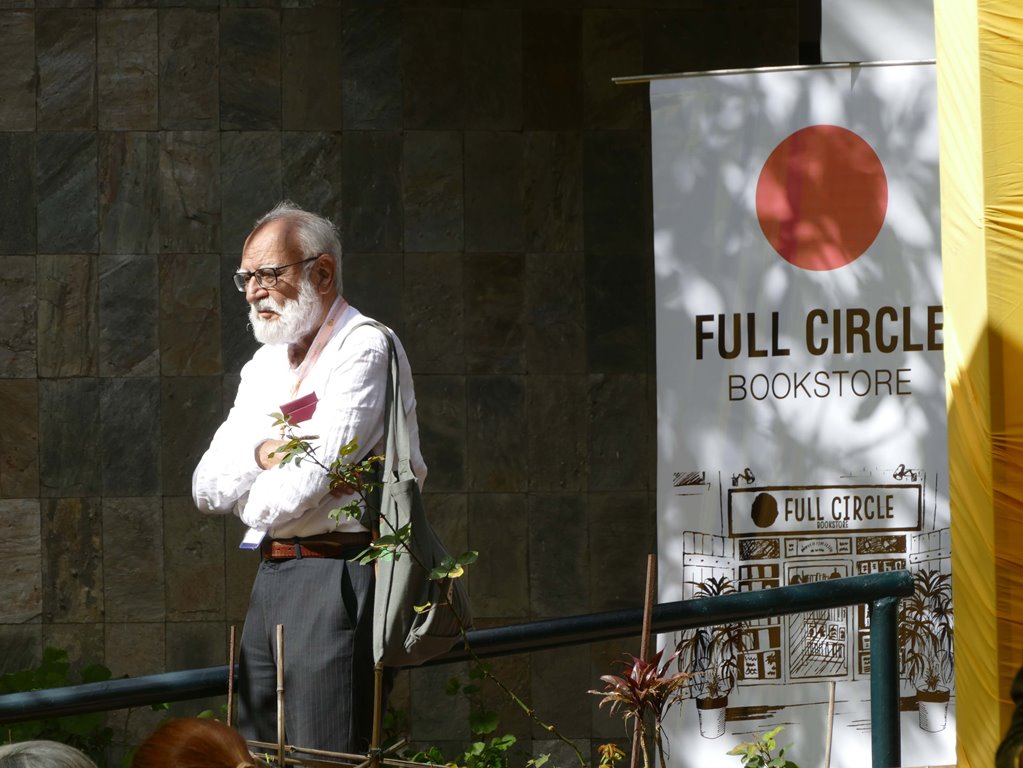
Kasauli’s attractions are mostly about different viewpoints, each view prettier and more picturesque than the other and oftentimes very different—just what nature lovers, bird watchers and photographers would want. Manki Point or Monkey Point, Gilbert trail, Sunrise Point and Sunset Point figure on the bucket-lists of tourists. Those looking for cinemas, malls, gyms, Pizza Huts and Domino’s and the like, stay away!
What Kasauli does offer is a quaint heritage market down a cobbled path where in the old days the khatta meetha goli—tangy tamarind candies spiced with Himalayan black salt—and aam papad, mango jelly and so on were what people bought. Very few old wooden and stone structures remain, others having been gutted, and there are quite a few bakeries and local pizza places, jostling for attention along with toys and knitwear brought up from the plains.
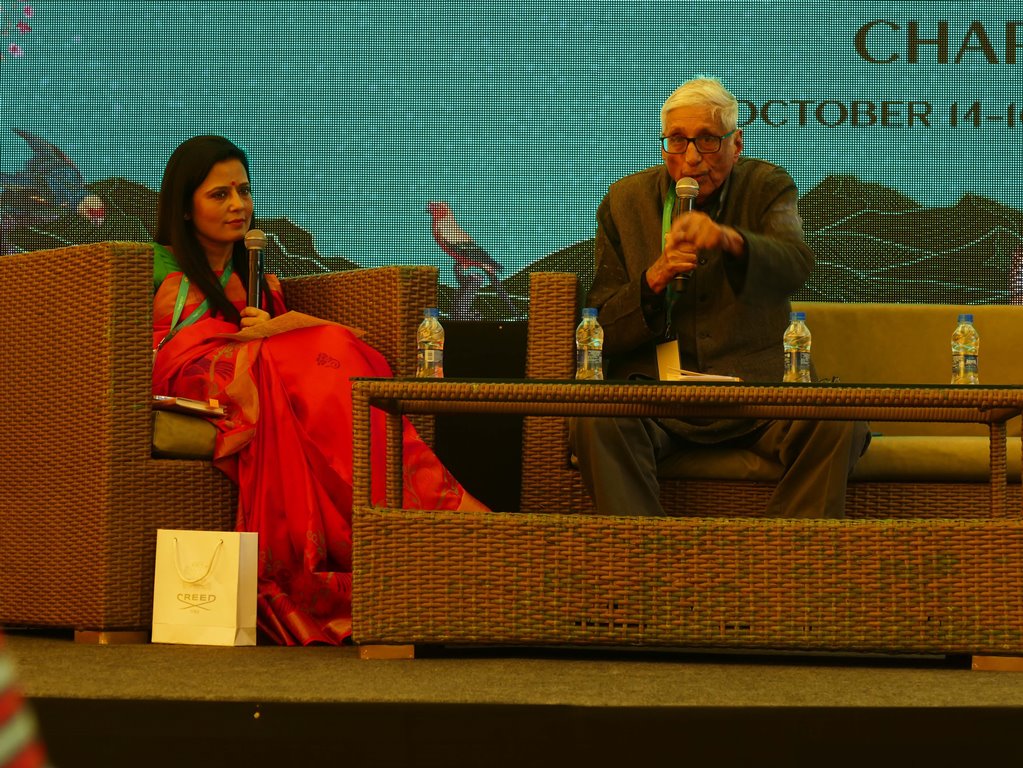
And, next only to nature, it is the remnants of the Raj that make Kasauli a must-see place. There are very few hotels in Kasauli, but a half-hour drive around elsewhere in the Kasauli hills shows up very many resorts and guest houses and smaller hotels which is where most tourists stay.



